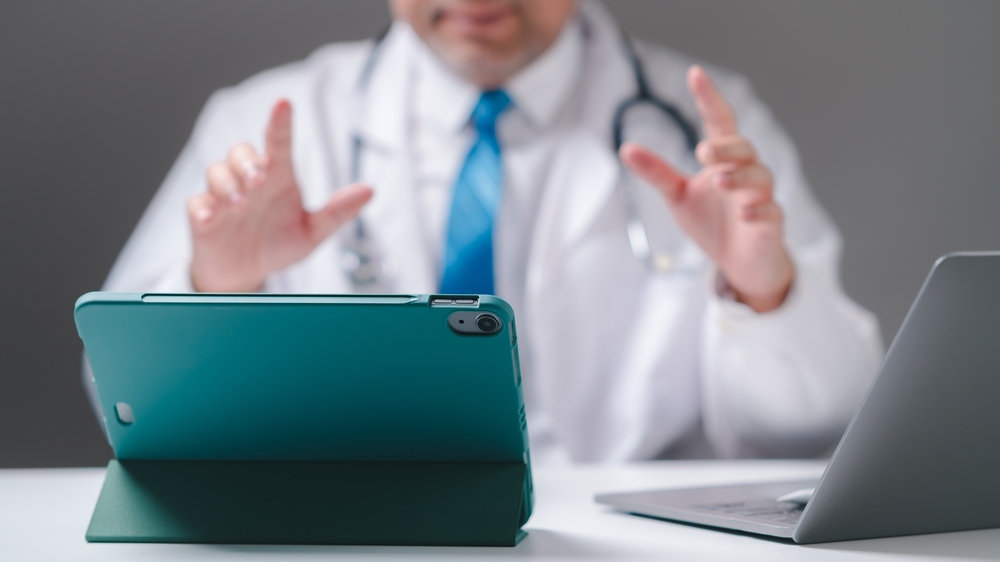Optimization of the Availability and Application of Healthcare Services and Patient Participation

The remote patient monitoring (RPM) market is considered to change the face of delivery health care because it eases on the steady monitoring of patients’ metrics from their homes. Announced hereby is a comprehensive guide on RPM where several aspects such as benefits of RPM, RPM technologies, RPM implementation tactics, obstacles to RPM, and possible developments in RPM will be discussed thoroughly. By working through this outline, the reader will gain a proper Coverage on how RPM can improve the process of healthcare administration.
What is RPM or otherwise understood, Remote Patient Monitoring?
Remote Patient Monitoring can be described as the process by which the patient receives medical information and data thru the use of digital technologies which are then transmitted electronically to a health care provider located in a different center. It is an effective method that lets track the chronic diseases, post-operation rehabilitation and other health processes.
Key Components of RPM
1. Wearable Devices
These features include smartwatches which measures the heart rate, activities and even the sleep. They gather information that can be sent to health care givers to keep recording the patient’s state of health.
2. Mobile Health Applications
These apps help patients to record their health information, make appointments and other important notifications including taking medication. They act like conduits through which patients and other practitioners can interact.
3. Telemedicine Platforms
These technologies enable video consultations, and assessment by health care professionals without appointments for physical meetings.
4. Data Analytics Tools
These systems are used to process the consumed data and recognize signs of potential diseases and dangerous probabilities. This in turn assists in arriving at sound decision concerning the patient’s care.
RPM Benefits
1. Improved Patient Engagement
Yet one of the biggest benefits of RPM is better patient interactions. Thus, stress is involved in the fact that when the patient is engaged in their own treatment, they are more careful with themselves. RPM is very helpful in creating a platform for patients to be talking to their healthcare givers often.
2. Improved Handling of Chronic Illnesses
Conditions for instance diabetes and hypertension are diseases that require constant check up on the patient to monitor the disease status. RPM helps healthcare providers to gather data that is collected continuously; this means that the complications are prevented. This can go a long way to prevent hospitalizations and in general better patient outcomes.
3. Cost Efficiency
Based on the analysis, RPM has the potential of reducing the costs of treatments in health care significantly. That means that, due to the decreased number of visits and hospitalizations, RPM has the potential for cost savings. Some research has indicated that when patients use RPM they require less admissions in the emergency room, as well as fewer days in the hospital.
4. Increased Access to Care
Another advantage is that RPM does not limit the healthcare provider’s access by geographical location to the patient’s home, in rural or any area that is not adequately served. Such access may enhance health of groups who cannot otherwise access medical services.
5. Better Health Outcomes
It is also important that patients who are involved in RPM programs can easily adhere to treatment plans. By observing signs in real time, feedback is almost instant, leading to the managements of the diseases and general well-being of a person.
Technologies Driving RPM

1. Internet of Things (IoT)
RPM alone requires IoT devices to effectively monitor vital signs and facilitate patient interaction with clinicians. For instance, smart glucose monitors can automatically synchronize data with care givers thus allowing for management of their condition on time.
2. Artificial Intelligence (AI)
Big data generated by RPM systems is analyzed more often through AI technologies. It creates an opportunity of handling chronic diseases effectively because algorithms monitor the patient’s condition and advise when there is a pending health complication.
3. Cloud Computing
All these processes are facilitated by cloud technology, which is instrumental in RPM as a source of patient information. This accessibility enables the health care providers to continuously observe patients to increase general efficiency in delivering health care.
Strategies For RPM

1. Assessing Patient Needs
An evaluation of the conceivable necessities of your patient populace should be made before RPM is administered. Ask people about their top health problems and how they prefer to use technology. Knowing your patient’s population demographic data will help in the choice of the right tools for data collection.
2. Choosing the Right Technology
Choose RPM tools that are suitable to your overall healthcare objectives and the clients you serve. Sources and objects can range from devices and applications that are easy to use and can take different health parameters from individuals. The patients on the other hand should be consulted so that they are more comfortable with the available technology.
3. Training Healthcare Providers
Thus, RPM technologies must be effectively taught to healthcare providers to deliver the required and expected results. This involves comprehending how to analyze data, as well as interacting with the patients, and coming up with kind clinical decisions, all based on real time information. The effective conduct of implementation follows sustainable training and support mechanisms to the educators.
4. Ensuring Data Security
However, as more and more patients embrace the Digital Health solutions, privacy is critical to the health of the patients. The following recommendations should put in place: Adopt strong security measures to guard the district’s health information. This ranges from data encryption, access control, and HPA (HIPAA) compliance etc.
Therefore, challenges regarding Remote Patient Monitoring surfaced in the course of the study
While RPM offers numerous advantages, several challenges must be addressed
1. Technical Issues
The patient populations should not be assumed to be technologically proficient and may have difficulties using a device or an application. To facilitate the inclusion of all the patient in the RPM program and enable them to fully benefit from it then enough support and training need to be provided.
2. Regulatory Compliance
Managing and achieving compliance with Heath Care regulations is often a complicated task. Health will further be concerned with legal aspects concerning remote monitoring and data sharing mobile health applications.
3. Data Overload
The information produced by RPM is enormous making it difficult to manage at times. It indicates a necessity of efficient filtering and analysis facilities on the problem, not to overload healthcare providers with excessive information.
4. Patient Engagement
Even though RPM fosters participation, the individual patient may not be participative. Some may never use technology, or may not be motivated to take charge of their health. Understanding of the methods of motivation and adherence is crucial, and there are several of them.
Future Trends in RPM

As technology continues to evolve, several trends are shaping the future of RPM:
- 1. More Interoperability with EHRs
- Future RPM systems will be more adaptive to integration with Electronic Health Records (EHRs). This will afford the healthcare providers an opportunity to have a holistic view of the patient setting up the basis for proper clinical management.
- 2. Wearable Technology: Overview
- The introduction of wearable technologies will facilitate more improved health monitoring. Next generation devices can be developed with additional features to monitor additional health parameters to give more interior view of patients’ health condition.
- 3. Enhanced AI Capabilities
- AI will remain as an engaged contributor to the healthcare system upholding, becoming capable of providing more complex advice and more precise prognosis regarding patients’ condition. This will improve the potential of the healthcare providers to intervene early and also to deliver treatments based on the individual patient’s need.
- 4. The Effectiveness of CBT
- When we said CBT is efficient for both standard and scientific research, it is not meant on the aspect of the disease solely as a physical affliction but rather as an illness that is equally, if not more, about mental health and behavior changes. The effectiveness of CBT to both common and scientific approaches to disease, its treatment, and preventive measures is not just with regard to illness but health which in this case encompasses mental health and behavior.
- In the future, given the general rising public concern with mental health, RPM is expected to encompass mental health assessment instruments. It will be these tools which shall assist in monitoring the general emotional state together with giving care to those patients having mental disorders.
- 5. Remote Rehabilitation
- Telehealth and RPM will enhance remote rehabilitation programs which were not existing in the past. Surgeons or any kind of injury patients can have customized therapy and care, all this without having to set physical foot outside their homes.
Conclusion
The idea of Remote Patient Monitoring is becoming global’s most advanced idea that turns the healthcare industry around. When inspecting RPM technologies in the healthcare contexts, the providers can build an effective patient care model. Knowing about those aspects of RPM, such as components, benefits, challenges, and trends will help healthcare professionals to implement this solution for better patient outcomes.
Implementing RPM as part of integrated healthcare delivery systems is not simply a technological innovation but rather a new orientation in health practices.” Through implementing these changes, health care providers can increase the quality of the care being provided, decrease the cost of provision, and in so doing increase the wellbeing of patients. The benefits that Remote Patient Monitoring has brought has to health care providers and patients can only be understood when these players embrace new technologies and information to overcome the challenges that are going to mark the future of their health jurisdiction. This shift in how healthcare is delivered is still in its infancy and the level of impact is immeasurable in millions of patients’ lives. Transforming the world from one mostly made in ill health to one mostly connected relies not on technology alone, but on RPM.


